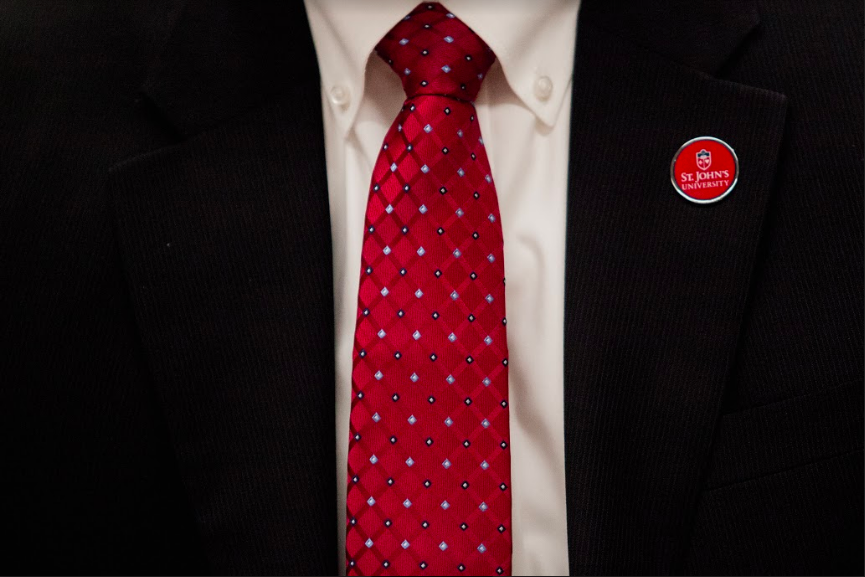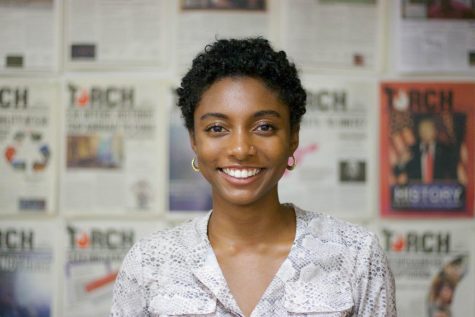We sat down with President Conrado “Bobby” Gempesaw on Nov. 6 to catch up on what he’s been doing. Though we don’t see him often, he’s behind the scenes watching what happens in student and faculty life — and he made us aware of that during an interview with the Torch in Newman Hall. Just before he headed out to the Men’s Basketball game, Gempesaw let us in on his plans for student retention, housing and food insecurity, and what it means to be a happy SJU student (as well as the NCAA as it relates to our sports teams, in our sports section on page 11). The conversation started with some claims that were made at the State of the University address. Keep reading to find out what he thinks.
RETENTION: How to keep students from leaving SJU
Help those who are most in need. President Gempesaw said the University has already spent over $269 million in “institutional aid” for students. Student success means that students have to stay for the four to six years it may take to ensure a degree. In order to ensure a high graduation rate, the school has to focus on a high freshman retention rate. “I’m pleased to report that during the last five years, our average freshman retention rate has increased to 82.7 percent, almost 83 percent. Now, a lot of people look at those numbers in terms of percentages. I look at them in terms of people, human beings, a five percentage point increase in retention rate, that’s 140, 150 students, individuals who you could help get the college degree,” Gempesaw told the Torch. “But the key there is if you don’t start in the freshman retention, you’ll never move up.”
This year’s graduation rate will be 62.8 percent, while our usual average is 58 percent.
Some of that institutional aid is seen in projects like “Discover Research,” which launched this summer, partnering students with faculty to do undergraduate research. Students were provided a stipend of $1,500. Another is Summer Institute, a three-day intensive for undecided students in St. John’s College and Collins College of Professional Studies, the two largest colleges. The last he mentioned is EPIC (Establish relationships, Promote possibilities, Impact directions, Confirm next steps), where “close to 500 students” participated in upperclassman-freshman partnerships.

His plans for retention are student-centered all the way — so it’ll be important to watch how those relationships pan out over the next few years.
HOUSING & FOOD INSECURITY: How to meet student needs
President Gempesaw is currently relying on Student Affairs, Campus Ministry, and University Admissions to anticipate and assist with the basic needs of students. It isn’t just about housing insecurity, it’s also food insecurity, financial issues and unexpected problems that happen to students all over this campus. “When we have a case where students have emergency housing needs, they’re offered on campus housing. And then we provide support in developing longer term plans,” Gempesaw said. “So the longer term is the second question, which we call long-term housing for housing and senior security, homeless students.” That’s where the DAX program comes in, which was announced by Father Tracy at the State of the University Address. The Chicago program has officially come to St. John’s, as well as a full-time director in charge of the SJU branch. But as of this month, many students have no idea this exists. “It’s not easy if you’re suffering through this to just say ‘Hey’, you know, [the University has] to seek them out and say, if you have challenges, please let us know.” The current stage of the process is raising awareness through the website and other marketing strategies.
Gempesaw’s plans for food insecurity have recently seen drastic change. There was a small loan that students could take from when they couldn’t pay for their meal plan. “They would volunteer and approach these offices and say, I’m suffering to these challenges. Or sometimes our faculty would notice. And so we, or the faculty, would refer to students. When they’re referred, there is an evaluation form that will be conducted and then funds will be transferred to the student’s Storm card.” That was about three years ago. Two years later, about $100,000 of the University’s budget was allocated to that need. This year, Gempesaw says he is happy to announce that they will have a permanent donor for this need through an endowment (a donation with long-term guidelines), and the name of the donor will be announced very soon.
HAPPINESS: How to ensure students actually like it here
President Gempesaw read our article on student happiness, where our Culture Editor, Priyanka Gera, surveyed 117 students on the Queens campus. 82 percent of students said they were happy, and those who weren’t gave a list of reasons why. Gempesaw told us, “So when I read that, I did my own quote … unscientific survey … I’ll share with you my personal approach to this. So I invited three students, to have lunch with me at the Faculty club [in Sun Yat Sen] …. So I asked them the question. I said, you know, this article … and they said dining options. Can you help me with this survey? And they said … the new bagel [restaurant]. They said, that’s really an improvement. And then I asked them, can you rate on a scale of one to 10? Then I started saying, various places, Marillac, the law school. I won’t tell you the ratings over this. But the highest rating they gave us: the law school.” Later on, he decided to take a trip to Montgoris Dining Hall (he did call it Monty’s), to interact with more students and see what they were eating. He also addressed claims about the science department, the “overwhelming course load” and dorm maintenance as well. The journey to on-campus happiness, it seems, is in the time he takes to read what students say in the Torch and hear their feedback directly in person.
He did add that 92 percent of students responded in a survey, after graduating, that they were satisfied with their overall experience. Of course, he acknowledged that you’ll find students at their happiest on graduation day.










